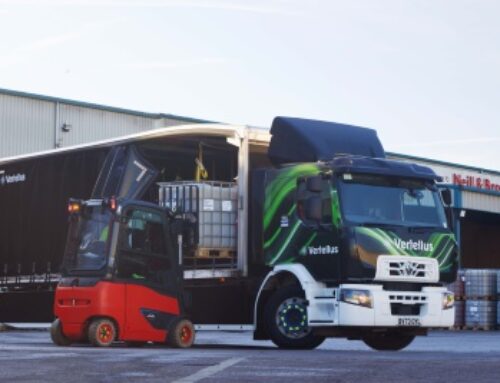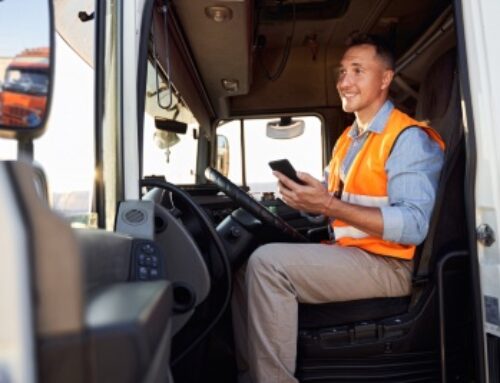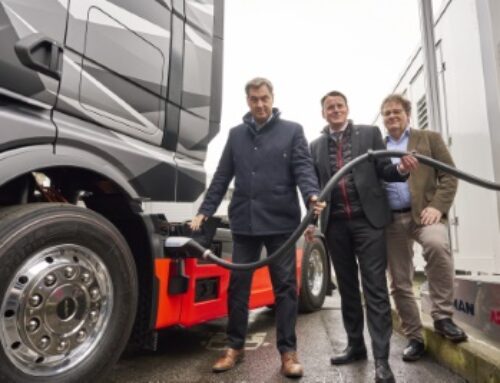Lightening the load for employees
 Wouter Satjin, sales director at Joloda Hydraroll, says automating loading processes can deliver a rapid return on investment
Wouter Satjin, sales director at Joloda Hydraroll, says automating loading processes can deliver a rapid return on investment
The logistics industry is facing unprecedented challenges. From endemic staff shortages to escalating stakeholder environmental demands, businesses must innovate to bounce back from the pandemic. And yet, highly paid lorry drivers are still compelled to wait for hours at loading bays while warehouse operatives manually load and unload. Accidents are routine – with an average of 13 fatalities and 26,000 non-fatal injuries per year within the UK transportation and storage industry.
The working experience has to improve – and that can only be achieved by using automation to minimise both delays and danger. Automated loading can eradicate driver delay and maximise drive time. It can minimise warehouse operatives’ manual activity and reliance on forklift trucks, radically improving safety. The process is faster and more efficient, allowing warehouse operatives to be relocated to safer, more enjoyable and potentially better-paid areas of the operation. At the same time, emissions are reduced. With more certainty about delivery timelines, businesses can explore further optimisation, automation and collaboration to meet environmental goals.
Valuing people
In a world of logistics and automation, it is almost counterintuitive to suggest people are a company’s key asset. But, right now, with endemic staff shortages, that is the case. Around 90 per cent of UK logistics companies have been affected by the HGV driver crisis, according to recent research undertaken on behalf of Joloda Hydraroll. The UK Warehousing Association has found that warehouses in Britain are paying up to 30 per cent more to recruit staff.
In a fiercely competitive jobs market, improving pay is just one part of effective staff retention. Safety and job satisfaction are also important considerations. Who wants to work in a cold, wet and potentially dangerous unloading bay? Or sit for hours in a desolate warehouse car park waiting for a chance to load or unload?
As the industry moves at pace towards the warehouse or factory of the future, companies need to innovate and make more effective use of scarce resources, including both people and space. The bonus is that better utilisation of resources will improve efficiency and productivity – meeting increased demands, while also reducing the carbon footprint.
Maximising resources
Improving the day-to-day effectiveness of lorry drivers must be a priority for any logistics business. There is no justification for leaving this scarce resource twiddling their thumbs for hours outside depots and warehouses waiting for unloading or loading slots. Yet for the vast majority of drivers, this is the routine experience. In addition to the 35 and 45 minutes it takes on average to load or unload a trailer, drivers often have to wait significantly longer for their turn at the loading bay.
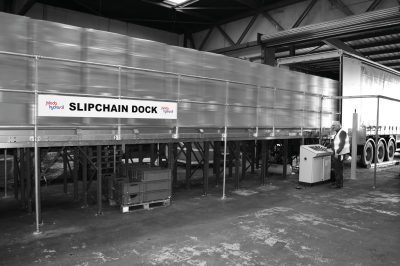 For warehouse operatives, the experience is a little better. Manually unloading and loading lorries is extremely physically demanding, in many cases relying on winches and ropes to move heavy and dangerous items on and off trucks. There is a huge reliance on stackers and forklift trucks – another area of expertise suffering significant shortage. This also creates additional safety risks: forklift-related accidents account for 78 work-related deaths each year, with 36 per cent of these being pedestrians.
For warehouse operatives, the experience is a little better. Manually unloading and loading lorries is extremely physically demanding, in many cases relying on winches and ropes to move heavy and dangerous items on and off trucks. There is a huge reliance on stackers and forklift trucks – another area of expertise suffering significant shortage. This also creates additional safety risks: forklift-related accidents account for 78 work-related deaths each year, with 36 per cent of these being pedestrians.
In addition, 1,300 UK employees are hospitalised each year with serious injuries following forklift accidents, and that number is rising. That’s five UK workers each workday suffering debilitating and life-changing injuries, including complex fractures, dislocations, deglovings and amputations.
Forklifts also add considerably to warehouse noise as trucks criss-cross the space, from inbound to outbound bays, with reversing alarms adding to the overall hubbub already created by conveyors and production lines.
As highlighted by the Occupational Safety and Health Administration (OSHA), if companies implemented more stringent training policies, it is estimated that 70 per cent of forklift accidents could be prevented. Yet one simple change – automating the loading and unloading process – completely transforms the experience for all employees, in trucks, forklifts and on the warehouse floor.
Improving efficiency
Automated loading systems are faster and more efficient – achieving in two or three minutes what typically takes over 30 minutes manually. They also require far fewer people, including forklift and truck drivers, as well as warehouse staff. Automating this part of the logistics process minimises the risk of both accident and product damage, which makes it far safer for employees to unload heavy and dangerous loads – such as lithium-ion batteries and nuclear waste. Damage is also avoided because products are not left outside in the rain during the loading or unloading process, or impaired as they’re manoeuvred in and out of the trailer by stacker or forklift.
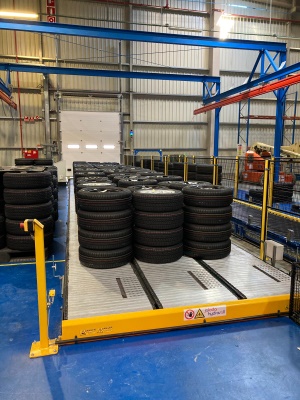 Plus, with an automated loading system, fewer forklift trucks are required, reducing costs, minimising the risk of accidents and cutting noise levels. Forklifts, despite their increasing shift to battery power, also have a significant carbon footprint. Cutting numbers improves a business’s environmental standing and frees up valuable space that is no longer required for storage or battery charging. In turn, businesses can increase output by reducing the storage space in the loading dock area. Staff can also be reallocated to other areas of the business – such as picking and packing – where the job is both better paid and more enjoyable, while also adding business value.
Plus, with an automated loading system, fewer forklift trucks are required, reducing costs, minimising the risk of accidents and cutting noise levels. Forklifts, despite their increasing shift to battery power, also have a significant carbon footprint. Cutting numbers improves a business’s environmental standing and frees up valuable space that is no longer required for storage or battery charging. In turn, businesses can increase output by reducing the storage space in the loading dock area. Staff can also be reallocated to other areas of the business – such as picking and packing – where the job is both better paid and more enjoyable, while also adding business value.
For lorry drivers, automated loading completely transforms the experience. Waiting is eradicated – with driver wait time reduced by 85 per cent. For drivers, this improves the day-to-day experience. It ensures more time on the road and reduces the uncertainty and stress associated with meeting delivery deadlines within restricted hours.
Environmental performance
Improving the efficiency of loading and unloading delivers the certainty required to drive forward additional improvements. These are efficiencies that will not only reduce costs but also support companies’ sustainability goals. With trusted time slots for drivers, there is no need to build in contingency and no need for extra trailers to cover idle time. This enables further optimisation of the logistics process, building on the progress already made through scheduling and routing systems to maximise delivery performance.
With confidence in the speed of loading and unloading turnaround, businesses can embrace new models. For example, they can collaborate with competitors to share journeys, reduce the number of trucks on the road and minimise empty miles.
Achieving this incremental improvement in logistics efficiency on top of the reduction in forklifts – both in and out of use – as well as cutting the emissions generated by drivers waiting in their trucks will provide a significant boost to any company’s environmental performance.
Conclusion
UK job vacancies rose to a record 1.3 million at the beginning of 2022 – and companies need to be truly innovative to recruit and retain a skilled workforce. Jobs need to be safer and more enjoyable, not just better paid.
Automating the loading process is a vital step in enabling the next stage of automation. It delivers a rapid ROI through improved efficiency and reduced costs. It also future proofs the business, especially against environmental regulation, by providing a platform for wider supply chain collaboration to minimise empty miles. Critically, loading automation makes the warehouse a better place to work for employees – and that is priceless.









